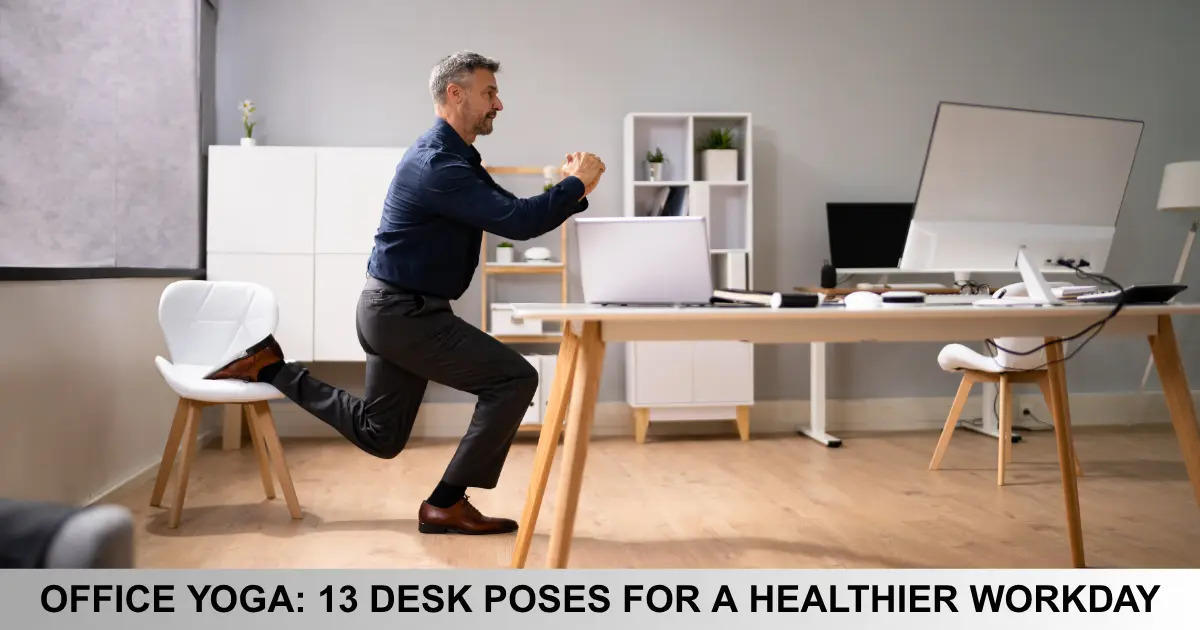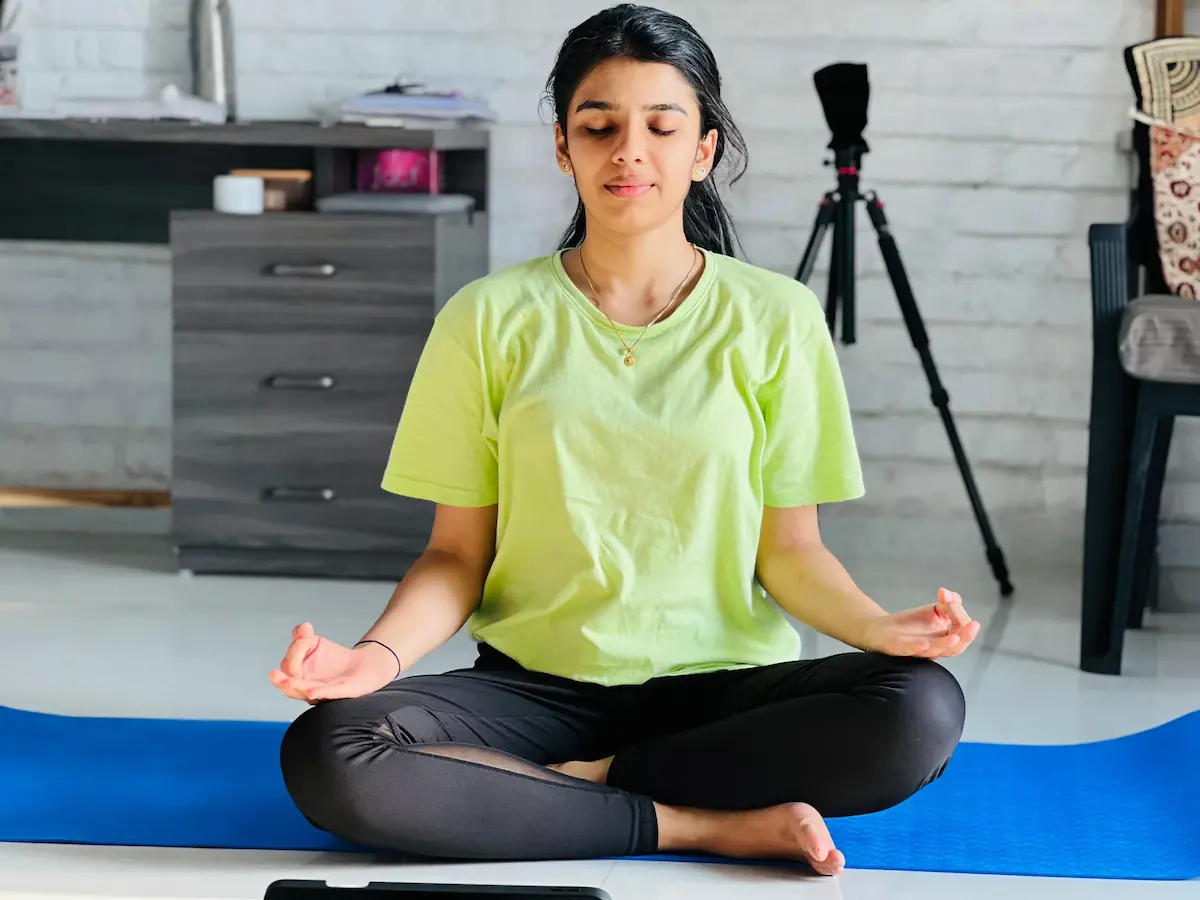Modern workdays often mean sitting for hours, leading to stiffness, tension, and fatigue. But taking a yoga break right at your desk can make a world of difference for both body and mind. Here are 13 simple, effective desk yoga poses you can practice in the office, including step-by-step instructions, key benefits, and essential tips for staying productive, relaxed, and healthy!
1. Seated Cat-Cow Stretch

How to Do It:
- Sit tall with your feet flat on the ground and hands on your knees.
- Inhale, arch your back, lift your chest, and look slightly upward.
- Exhale, round your spine, and tuck your chin toward your chest.
- Repeat for 5–8 breaths, moving smoothly with each breath.
Benefits:
- Warms up the spine and helps with flexibility.
- Eases tension in the back and neck after long periods of sitting.
Tips:
- Move slowly, and don’t force the stretch.
- Keep your feet flat and aligned.
2. Neck Stretches
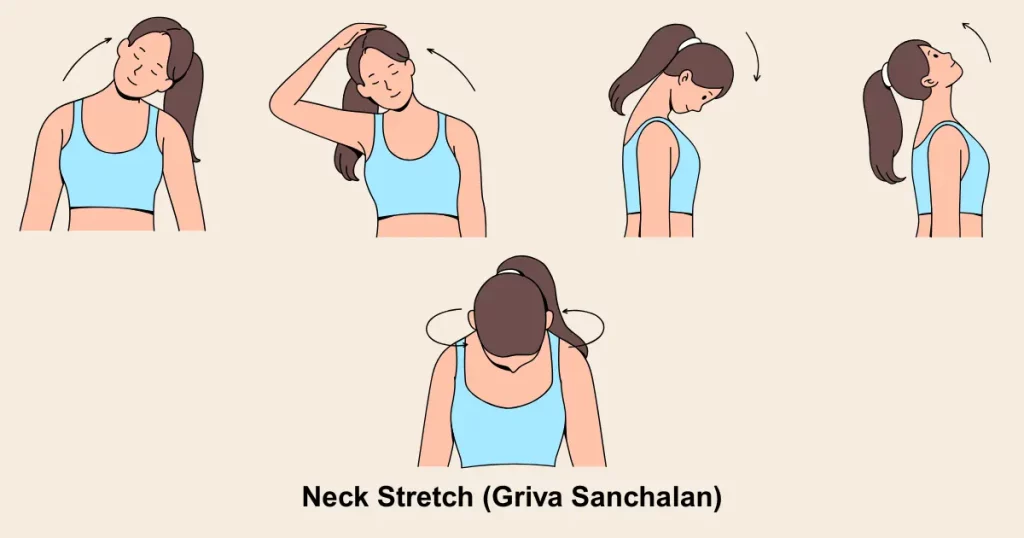
How to Do It:
- Sit upright with shoulders relaxed.
- Slowly tilt your head to one side, bringing your ear towards your shoulder (don’t lift your shoulder).
- Hold for 3–5 breaths.
- Switch sides.
Benefits:
- Relieves neck stiffness and tension.
- Improves flexibility after hours at your desk.
Tips:
- Avoid rolling your neck backward.
- Move gently to avoid straining muscles.
3. Seated Forward Fold
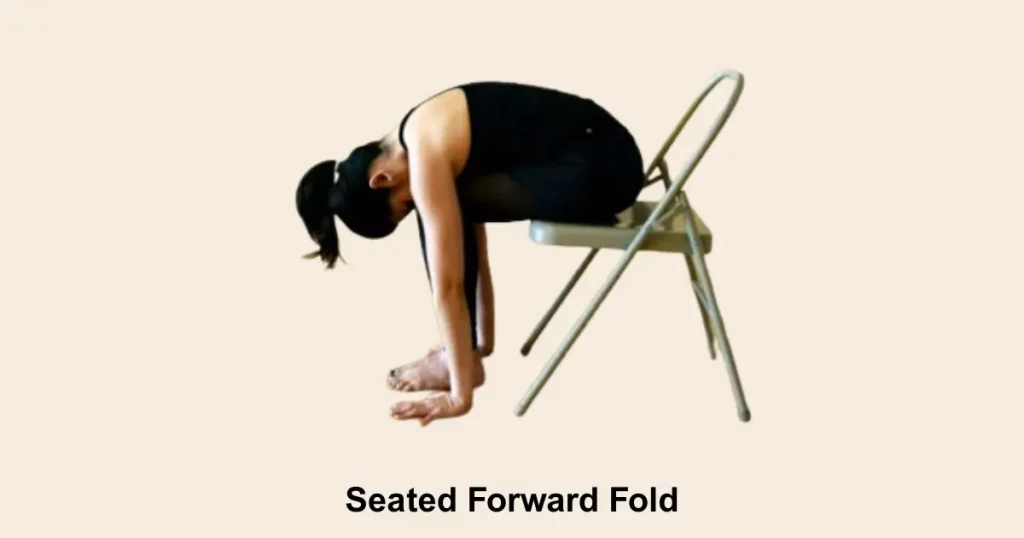
How to Do It:
- Sit comfortably with feet hip-width apart.
- Hinge forward at the hips, moving your chest toward your thighs.
- Let your arms hang loosely or rest them on your legs.
- Hold for 5 breaths, feeling a gentle stretch.
Benefits:
- Stretches lower back and hamstrings.
- Provides relief from sitting all day.
Tips:
- Keep your back long not rounded for a safer stretch.
4. Seated Spinal Twist
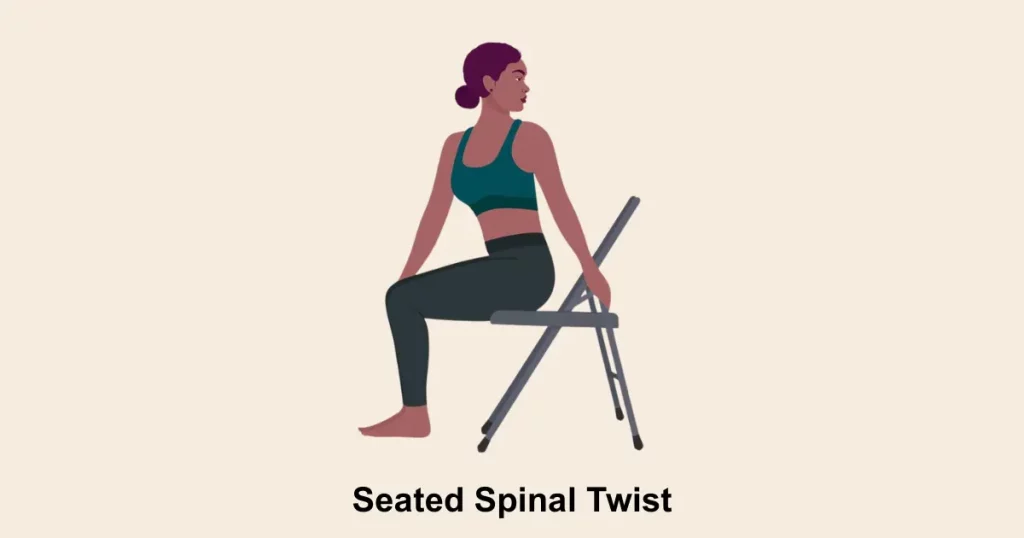
How to Do It:
- Plant your feet flat on the floor, sit up tall.
- Place your right hand behind your right hip (on your chairback), left hand on your thigh.
- Inhale deeply; as you exhale, twist your torso to the right, looking over your shoulder.
- Hold for a few breaths, switch sides.
Benefits:
- Releases tension in spine and shoulders.
- Helps with relaxation during workdays.
Tips:
- Keep hips facing forward.
- Twist from the waist, not the hips.
5. Wrist and Finger Stretches
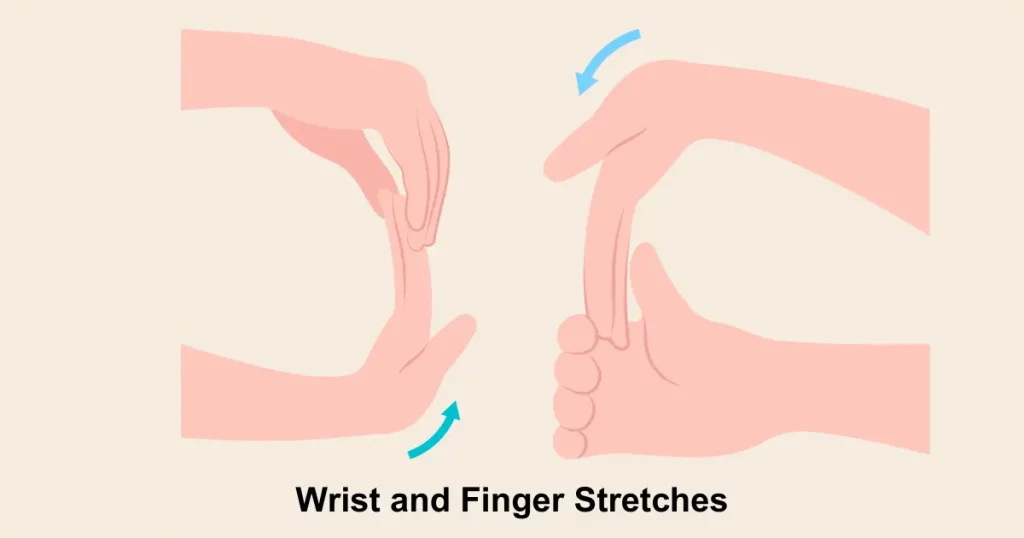
Read More: 7 Beginner Yoga Poses That Offer Maximum Health Benefits at Home
How to Do It:
- Extend your right arm forward, palm facing away.
- With your left hand, gently pull back your right fingers toward you.
- Hold for several breaths, switch sides.
- Wiggle fingers and roll wrists afterward.
Benefits:
- Relieves wrist tension from typing and mouse use.
- Prevents repetitive strain injuries.
Tips:
- Avoid overstretching move only until you feel a gentle stretch.
6. Seated Hamstring Stretch
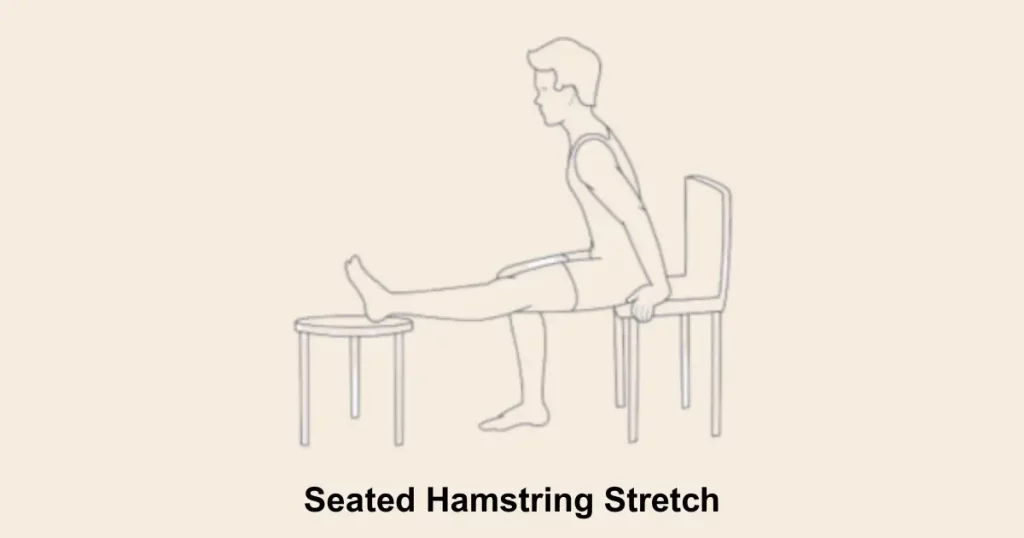
How to Do It:
- While seated, extend one leg straight with heel on the floor and toes pointing up.
- Keeping spine straight, lean forward from the hips toward your extended leg.
- Hold and breathe; switch legs.
Benefits:
- Lengthens hamstrings.
- Relieves lower back tension.
Tips:
- Keep back straight don’t collapse over the leg.
7. Shoulder Rolls
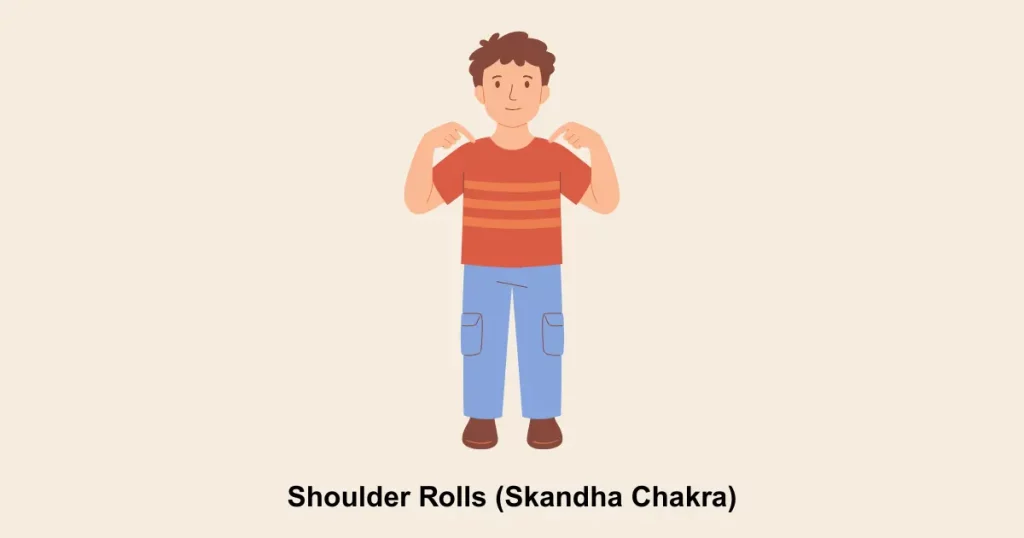
How to Do It:
- Sit comfortably, arms by your sides.
- Inhale, roll both shoulders forward and upward.
- Exhale, roll shoulders back and down.
- Repeat for 8–10 slow circles, alternate directions.
Benefits:
- Releases built-up shoulder and upper back tension.
- Great after long desk sessions.
Tips:
- Keep movements slow and controlled.
8. Seated Side Stretch
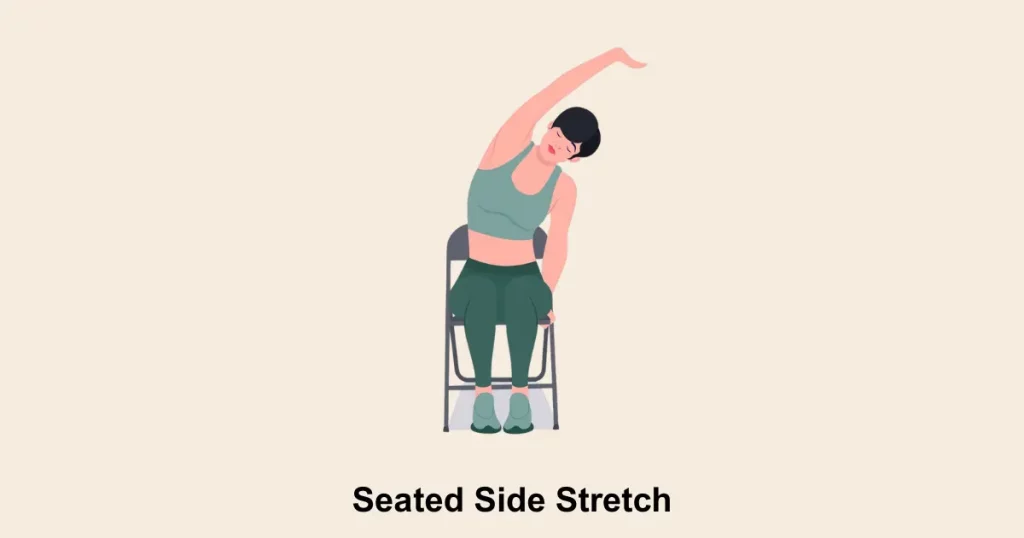
How to Do It:
- Sit tall, feet flat on the floor.
- Raise your right arm overhead; gently lean to the left, stretching the right side of your body.
- Hold for 3–5 breaths.
- Switch sides.
Benefits:
- Opens up the sides; relieves stiffness.
- Promotes better posture.
Tips:
- Keep sitting bones anchored; don’t twist.
9. Seated Mountain Pose
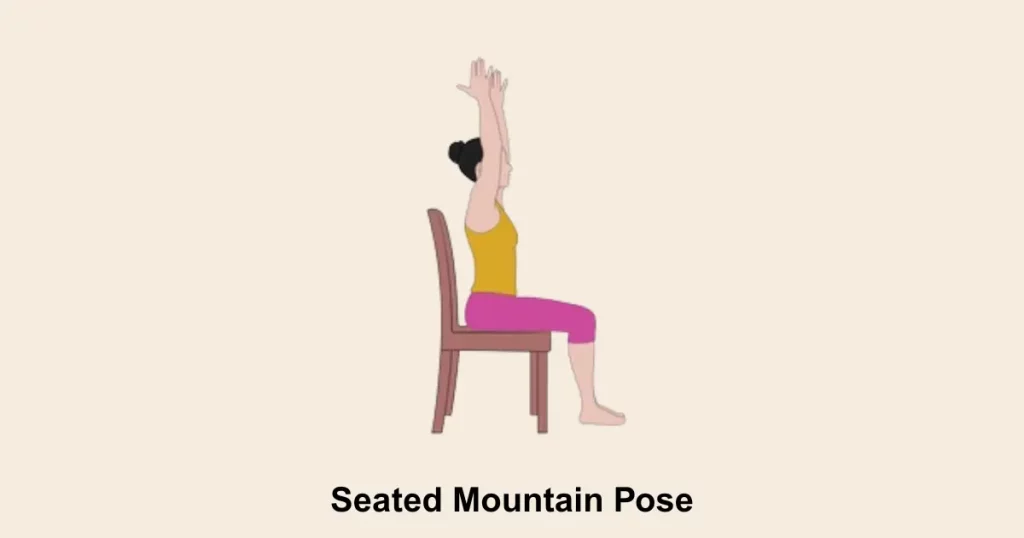
How to Do It:
- Sit with feet flat, spine long.
- Inhale, raise both arms overhead, palms facing each other or joined.
- Stretch upward, lengthen spine.
- Hold for a few breaths.
Benefits:
- Counters the hunched posture developed from sitting.
- Energizes and grounds you.
Tips:
- Relax the shoulders away from your ears.
10. Chair Pigeon Pose
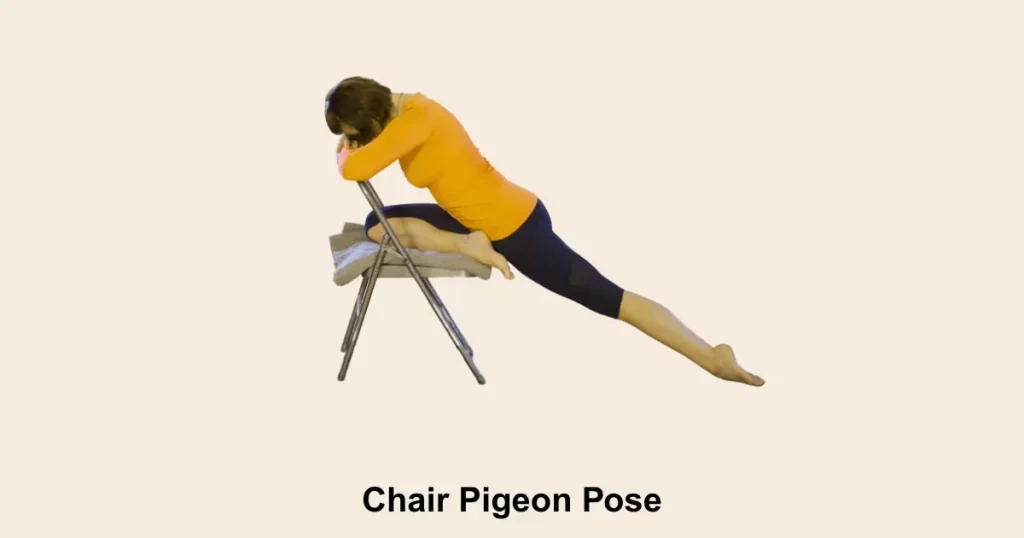
How to Do It:
- Sit with feet flat. Place right ankle on left knee.
- Flex your right foot and gently press your right knee toward the floor.
- Hold for 5–8 breaths, keeping spine straight.
- Switch legs.
Benefits:
- Releases tightness in hips and lower back.
- Useful for those sitting long hours.
Tips:
- Don’t force your knee downward; stop if you feel pain.
11. Seated Leg Extensions
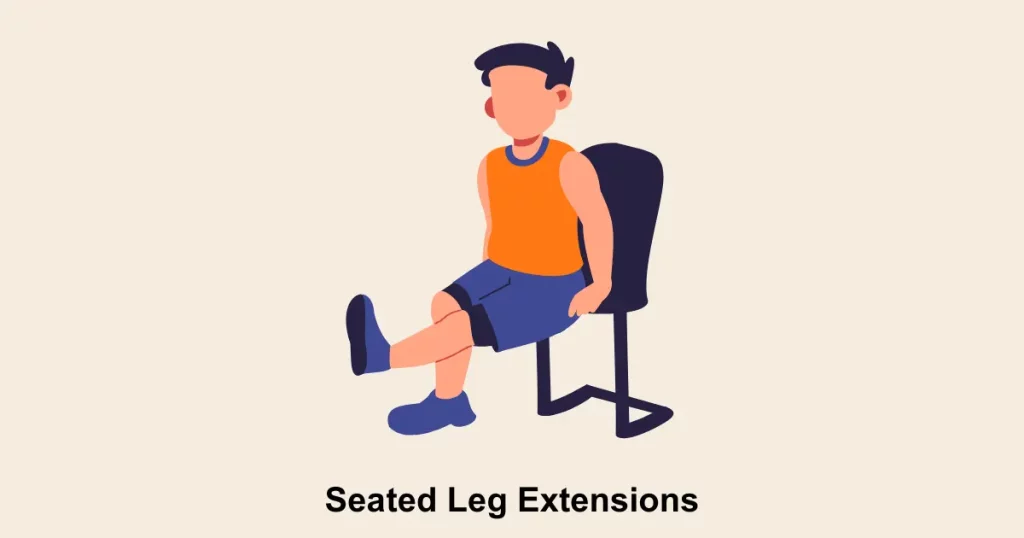
How to Do It:
- Sit straight, extend your right leg in front of you.
- Hold for a few breaths, keeping your toes flexed.
- Switch to left leg.
Benefits:
- Improves blood circulation.
- Gently stretches legs and calves.
Tips:
- Don’t lock your knee keep it slightly soft.
12. Standing Forward Fold
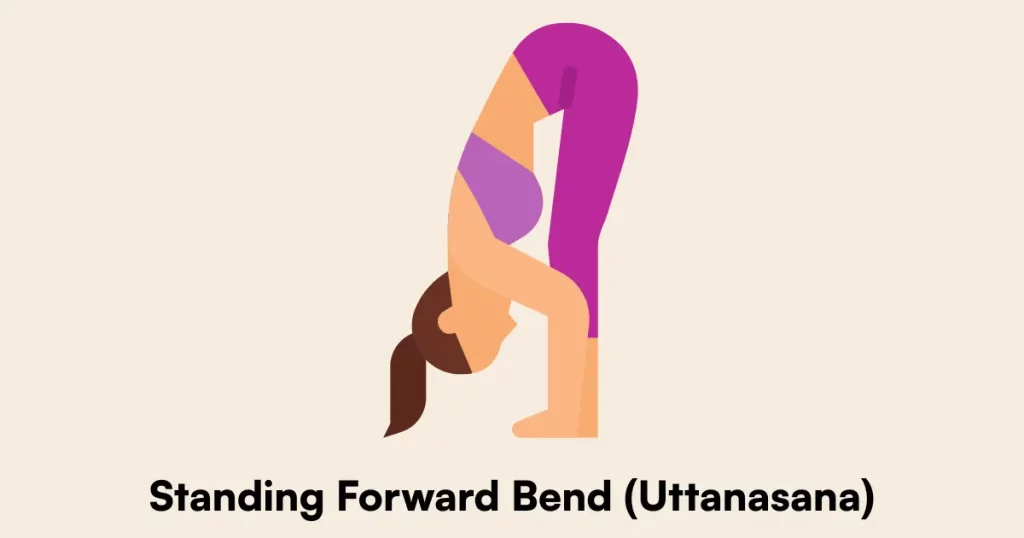
How to Do It:
- Stand tall, feet hip-width apart.
- Hinge from hips, folding forward and letting arms and head hang.
- Bend knees slightly if needed.
- Hold for 5–10 breaths.
Benefits:
- Stretches hamstrings, spine, and back.
- Relieves stiffness from sitting.
Tips:
- Avoid if you have severe back or disc issues without professional advice.
13. Ankle Rolls
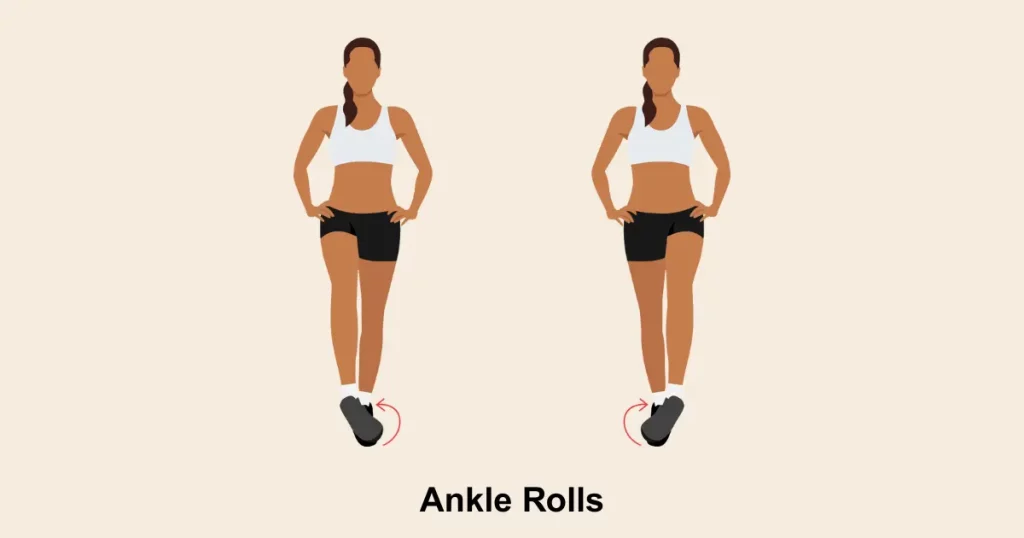
How to Do It:
- While seated, lift your right foot off the floor.
- Slowly roll your ankle in circles, clockwise then counterclockwise.
- Repeat with the other ankle.
Benefits:
- Improves circulation in ankles and feet.
- Alleviates stiffness from prolonged sitting.
Tips:
- Do slowly to avoid cramping.
Desk Yoga Sequence Tip
To refresh your body and mind, perform this routine in sequence for 10–15 minutes, 1–2 times daily. Incorporate a mix of seated and standing stretches as per your space and comfort.
- Why Your Mind Wanders During Meditation
- Beginner Yoga Poses for Stress Relief
- Yoga vs Gym: Which is Better for Mental Health?
Frequently Asked Questions (FAQs)
Q: How often should I do desk yoga at work?
Aiming for at least one session a day, or short stretches every hour, helps maintain mobility and reduce tension.
Q: What if I can’t do some of these poses at my desk?
Prioritize the exercises you can safely perform and adapt them to your space. Even small, gentle movements are beneficial.
Q: Will desk yoga distract me from work?
Brief breaks for movement actually increase focus, productivity, and reduce fatigue, making you more effective overall.
Q: Do I need special clothing or equipment for desk yoga?
No comfortable office attire and a sturdy chair are all you need!
Q: Are there precautions I should take?
Yes: move slowly, never push into pain, and consult a healthcare professional if you have chronic injuries or specific health concerns.
Conclusion
Bringing yoga to your desk isn’t just about physical health it’s about creating space for relaxation, reducing stress, and boosting work performance. Try these desk yoga stretches regularly and let your body (and mind!) thank you with less pain, more energy, and a renewed sense of well-being.
